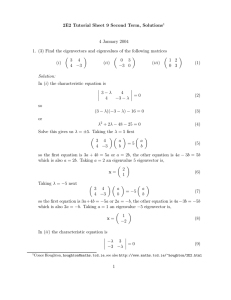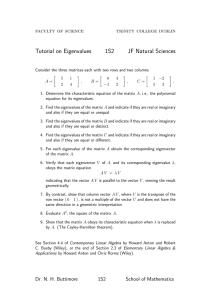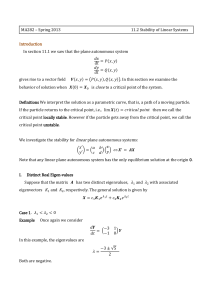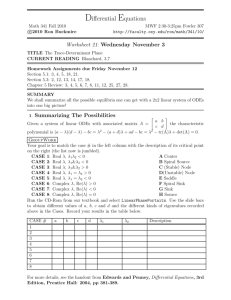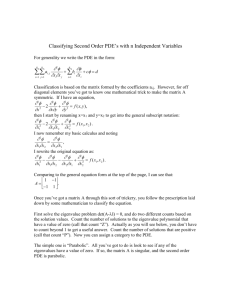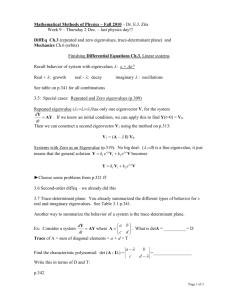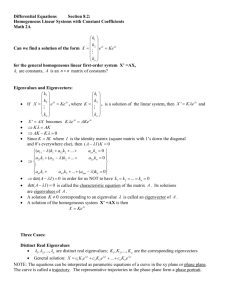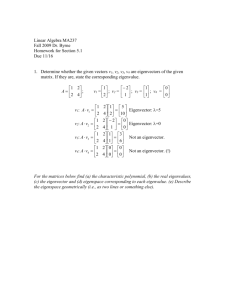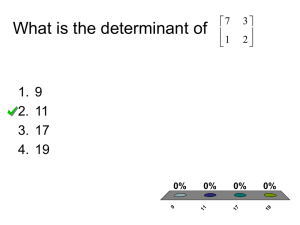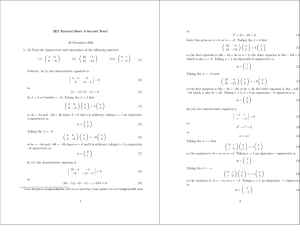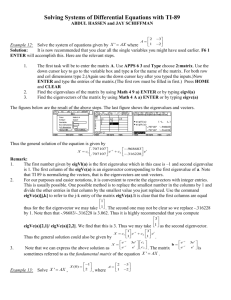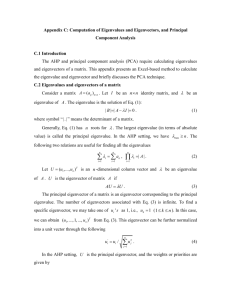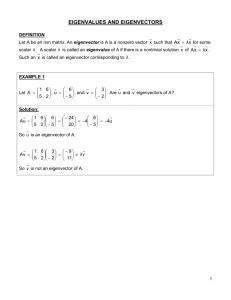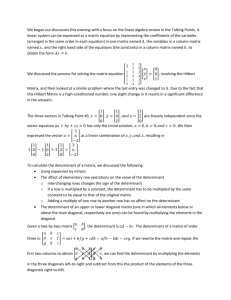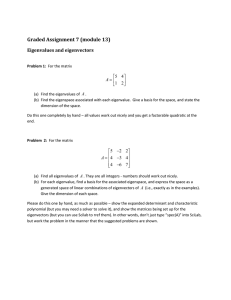Answers To Final Exam for Linear Algebra
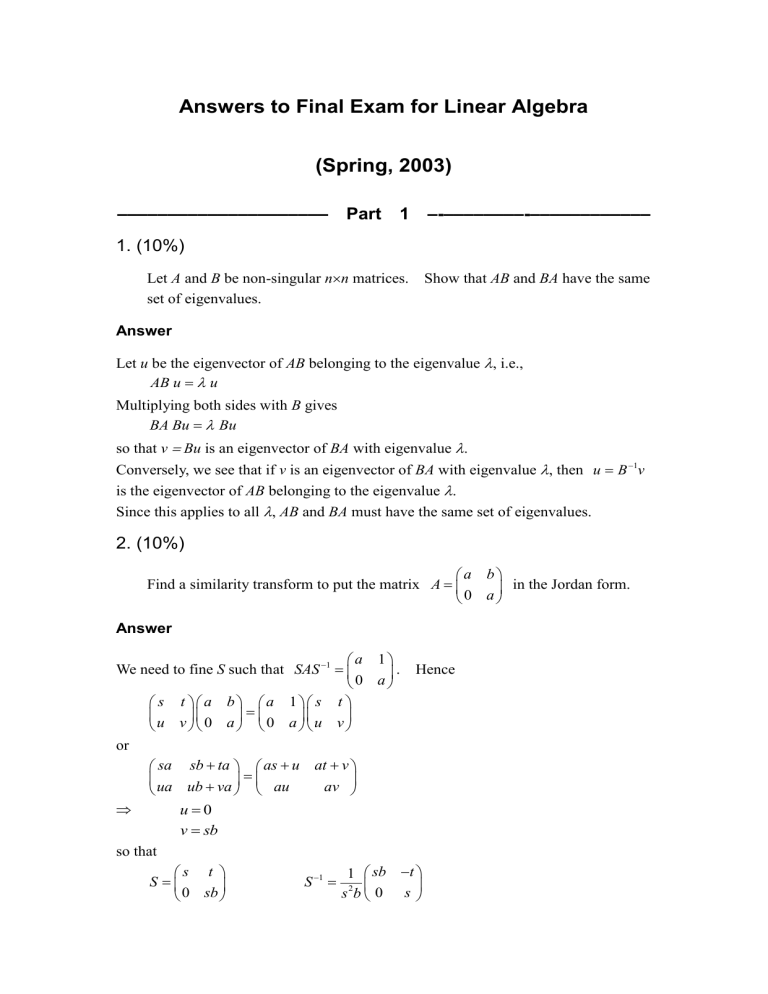
Answers to Final Exam for Linear Algebra
(Spring, 2003)
––––––––––––––––––––– Part 1 –-––––––––-––––––––––––
1. (10%)
Let A and B be non-singular n
n matrices. Show that AB and BA have the same set of eigenvalues.
Answer
Let u be the eigenvector of AB belonging to the eigenvalue
, i.e.,
AB u
u
Multiplying both sides with B gives
BA Bu
Bu so that v
Bu is an eigenvector of BA with eigenvalue
.
Conversely, we see that if v is an eigenvector of BA with eigenvalue
, then is the eigenvector of AB belonging to the eigenvalue
. u
1
B v
Since this applies to all
, AB and BA must have the same set of eigenvalues.
2. (10%)
Find a similarity transform to put the matrix A
a b
0 a
in the Jordan form.
Answer
We need to fine S such that
s t u v
a
0 b a a
0
SAS
1 a
1
s t a
u v
0 or
sa sb
ta ua ub
va u
0 v
sb as
u at
v au av
so that
S
s
0 t sb
1 a
. Hence
S
1
1
2 s b
sb
t
0 s
where s , t are arbitrary non-zero constants.
3. (20%)
Let A
0 0 0 1
0 0 1 0
0 1 0 0
1 0 0 0
What are the eigenvalues?
For each n
2 , find scalars a and b so that A n aI
bA .
Answer det A
I
det
0
0
0 0 1
1
1
0
0
1 0 0
4
2
2
1
2
1
2
3
2
1
Therefore, the eigenvalues are
1 , both being doubly degenerate. Thus, the
Cayley- Hamilton equation is
A 2
I
2
0
A
2
I
Hence,
A n
I
A
for
Thus, a
1
2
1
n n
even odd b
1
2
1
n
3. (20%)
Given a square matrix A with distinct eigenvalues, we define the spectral matrices as
G r
s r a r
s
a s where a and r a.
b.
G r a s
are the eigenvalues of
is an eigen-matrix of
G G
0 for r s r s
.
A
A . Show that
with eigenvalue a r
.
Answer
Using the Cayley- Hamilton equation, we have
r
r
s r a r
s
a s
0 so that
AG r
a G r r i.e., G r
is an eigen-matrix of A with eigenvalue
G G r s
a r
t
a t
a s
u
a u a . Next, r
If r
s , the second product will contain the factor
r
. Hence,
G G
0 r s
––––––––––––––––––––– Part 2 –-––––––––-––––––––––––
Let
be a non-orthogonal basis with inner products s ij
e e i j
.
Let A be a linear transformation defined by its matrix elements a ij
e i
A e j
.
4. (10%)
Find the characteristic (secular) equation for A .
Answer
If u is an eigenvector of A with eigenvalue
, then
A u
u
Writing u
u e i i
, we have i i
A u e i i
i u e i i
Taking the inner product with e j
gives
i e j
A e i u i
i e e j i u i i
e j
A e i
e e i u i
0
The secular equation is therefore
det A
S
0
5. (10%)
What is the criterion, in matrix form, for A to be hermitian (self adjoint)?
Answer
By definition, A is hermitian if for arbitrary vector u and v , u Av
Au v (1)
In matrix form, we have
† u v u S v where S
is the overlap matrix. Hence (1) becomes
† u SAv
†
Au Sv
u
† †
A Sv for all u and v i.e.,
†
SA A S or
6. (20%)
A
†
SAS
1
Let
A
1
1
1
2
and
S
1 1
1 2
Find the eigenvalues and eigenvectors of A .
Are the eigenvectors orthogonal?
Answer
The secular equation is det
1
1
2 2
0
1
1
1
0
1
1
0
so that the eigenvalues are
1
Since the eigenvalues are distinct, they are orthogonal.




